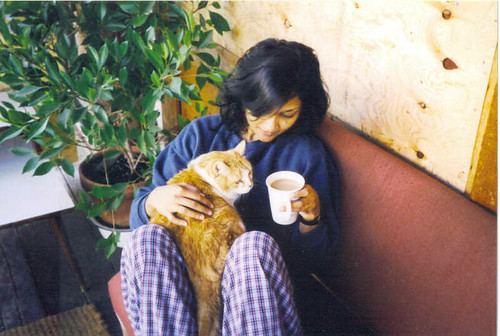Triggers: Creating Behavior that Lasts, Becoming the Person You Want To Be
Triggers: Creating Behavior that Lasts, Becoming the Person You Want To Be
by Marshall Goldsmith

We have all set goals for changing certain behaviors in ourselves at one time or another, and failed to follow through to achieve the results we envisioned. Perhaps we want to be a better neighbor, or perhaps we want to stay calm and not raise our voices at our children -- we manage to easily identify what behavior we want to change, but somehow, we don’t manage to change it successfully.
In this book, leadership coach Marshall Goldsmith takes a look at why some of us find it challenging to change our behaviors even though we perfectly well know we need to and we want to; and gives us practical suggestions to overcome the obstacles to getting there.
The book is laid out in four parts. In part one, “Why Don’t We Become the Person We Want to Be?” the author explains that it is easy to find excuses and blame the environment or circumstances for our inability to change our behavior. Our reactions are impulsive, not thoughtful and responsive. For those of us who have identified the behavior we want to change, and are motivated and committed to changing that behavior, the author encourages us to find the triggers - both internal and external - that hold us back and keep us where we are.
In part two “Try”, we are introduced to the acronym AIWATT: Am I Willing, At This Time to make the investment required to make a positive difference on this topic? Every time we are faced with a choice of either to engage or to ‘let it go’, the author encourages us to ask ourselves this AIWATT question as a first principle to become the person we want to be. The answer to that question at the given time, under the given circumstances, will determine how we react to that situation, thereby helping us create the behavior change we are working towards.
Another interesting insight is the difference between asking ourselves active questions rather than passive questions. For example, when asked a passive question like, “Are you happy?” we might provide an “environmental” answer like “no” and attribute external factors for our unhappiness. However, when asked an active question like, “Did you do your best to be happy today?” we quickly search ourselves and come up with a few ways in which we consciously engaged in making ourselves happy. The passive question tries to gauge the state of mind whereas the active question challenges us to take responsibility and defend our actions, spurring us on to seek our own behavioral changes.
In part three, “More Structure, Please”, we learn that structure not only increases our chance of success, it makes us more efficient at it. Not all structures are the same, so we must arrive at what works for each of us in the given situation. When we make a shopping list, we are imposing a structure by clearly stating what we need to buy and what we don’t. We schedule our appointments on our calendars and set reminders to impose structure on our daily life. Yet, when it comes to interpersonal interactions, or our own reactions, we prefer to wing it and go with our instincts, which hinders our attempts at changing our behaviors in a thoughtful and structured way.
The author also points out that our environment constantly conspires against us and depletes us. Perhaps a big part of our day is pacifying irate customers, or perhaps we sit in a too-long meeting without accomplishing much, or perhaps we battle with technology all day to get even simple jobs done. All of this can drain us, deplete us, leaving us prone to less prudent actions that we might regret.
The book suggests that there is an infinitesimal ‘space’ between a trigger and our reflexive response. If we can learn to recognize this space and increase it to allow for awareness and choice, we can learn to redirect our impulse to arrive at an appropriate response. When we turn our thoughtless impulsive response to a thoughtful chosen response, we are on the right track to achieving the change we want.
In the last part, “No Regrets”, the author asks us to imagine what a drudgery it would be to go through life never changing the food we eat, the clothes we wear, the social and political views we hold. We know that change is the only constant thing in life. Yet, when it comes to changing how we treat people or how we interact with others, we wear the badge of changelessness with pride. We tell ourselves “this is who I am.”
When we cling to a negative behavior that affects us and the ones we love, we are choosing to be miserable and make others miserable. The book concludes by asking us to think about one change that we won’t regret later on. Be it the scolding response to our misbehaving child, or the sarcastic remark we are quick to blurt out, if we can change one thing and continue doing it forever without regretting it, then now is the time to do it.
[image source: multcolib.org]
by Marshall Goldsmith

We have all set goals for changing certain behaviors in ourselves at one time or another, and failed to follow through to achieve the results we envisioned. Perhaps we want to be a better neighbor, or perhaps we want to stay calm and not raise our voices at our children -- we manage to easily identify what behavior we want to change, but somehow, we don’t manage to change it successfully.
In this book, leadership coach Marshall Goldsmith takes a look at why some of us find it challenging to change our behaviors even though we perfectly well know we need to and we want to; and gives us practical suggestions to overcome the obstacles to getting there.
The book is laid out in four parts. In part one, “Why Don’t We Become the Person We Want to Be?” the author explains that it is easy to find excuses and blame the environment or circumstances for our inability to change our behavior. Our reactions are impulsive, not thoughtful and responsive. For those of us who have identified the behavior we want to change, and are motivated and committed to changing that behavior, the author encourages us to find the triggers - both internal and external - that hold us back and keep us where we are.
In part two “Try”, we are introduced to the acronym AIWATT: Am I Willing, At This Time to make the investment required to make a positive difference on this topic? Every time we are faced with a choice of either to engage or to ‘let it go’, the author encourages us to ask ourselves this AIWATT question as a first principle to become the person we want to be. The answer to that question at the given time, under the given circumstances, will determine how we react to that situation, thereby helping us create the behavior change we are working towards.
Another interesting insight is the difference between asking ourselves active questions rather than passive questions. For example, when asked a passive question like, “Are you happy?” we might provide an “environmental” answer like “no” and attribute external factors for our unhappiness. However, when asked an active question like, “Did you do your best to be happy today?” we quickly search ourselves and come up with a few ways in which we consciously engaged in making ourselves happy. The passive question tries to gauge the state of mind whereas the active question challenges us to take responsibility and defend our actions, spurring us on to seek our own behavioral changes.
In part three, “More Structure, Please”, we learn that structure not only increases our chance of success, it makes us more efficient at it. Not all structures are the same, so we must arrive at what works for each of us in the given situation. When we make a shopping list, we are imposing a structure by clearly stating what we need to buy and what we don’t. We schedule our appointments on our calendars and set reminders to impose structure on our daily life. Yet, when it comes to interpersonal interactions, or our own reactions, we prefer to wing it and go with our instincts, which hinders our attempts at changing our behaviors in a thoughtful and structured way.
The author also points out that our environment constantly conspires against us and depletes us. Perhaps a big part of our day is pacifying irate customers, or perhaps we sit in a too-long meeting without accomplishing much, or perhaps we battle with technology all day to get even simple jobs done. All of this can drain us, deplete us, leaving us prone to less prudent actions that we might regret.
The book suggests that there is an infinitesimal ‘space’ between a trigger and our reflexive response. If we can learn to recognize this space and increase it to allow for awareness and choice, we can learn to redirect our impulse to arrive at an appropriate response. When we turn our thoughtless impulsive response to a thoughtful chosen response, we are on the right track to achieving the change we want.
In the last part, “No Regrets”, the author asks us to imagine what a drudgery it would be to go through life never changing the food we eat, the clothes we wear, the social and political views we hold. We know that change is the only constant thing in life. Yet, when it comes to changing how we treat people or how we interact with others, we wear the badge of changelessness with pride. We tell ourselves “this is who I am.”
When we cling to a negative behavior that affects us and the ones we love, we are choosing to be miserable and make others miserable. The book concludes by asking us to think about one change that we won’t regret later on. Be it the scolding response to our misbehaving child, or the sarcastic remark we are quick to blurt out, if we can change one thing and continue doing it forever without regretting it, then now is the time to do it.
[image source: multcolib.org]
Labels: book review, non-fiction, self-help


0 Comments:
Post a Comment
<< Home